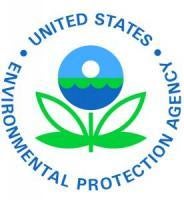EPA has an organized emergency response program for responding to man-made and natural disasters and is positioned to support the Federal Emergency Management Agency (FEMA), state, local, and tribal partners in response to Hurricane Harvey.
“I am in regular contact with EPA Region 6 and want to commend them for their leadership and preparation,” said EPA Administrator Scott Pruitt. “EPA is closely coordinating with state and regional partners, and we have teams standing by to support FEMA. EPA is ready to respond to anything that may occur due to Hurricane Harvey.”
EPA headquarters emergency operations center is monitoring the storm closely and making preparations to activate in order to support states and regions affected by the storm.
EPA’s Region 6 office in Dallas is taking action to ensure that Superfund sites are secured in advance of the storm, to assist approximately 300 public drinking water system rapid assessments, and to seamlessly integrate emergency response activities with Texas, Louisiana, and other federal response agencies.
EPA supports hurricane preparedness and response in a number of ways, including:
• Addressing Fuel Shortages: The Clear Air Act allows EPA Administrator Pruitt, in consultation with Energy Secretary Perry, to waive certain fuel requirements to address shortages that occur as a result of the storm. If Administrator Pruitt determines that extreme and unusual fuel supply circumstances exist in a state or region as a result of the hurricane, a temporary waiver can help ensure an adequate supply of gasoline is available in the affected area, particularly for emergency vehicles. EPA has an experienced team standing by to expedite handling of any fuel waiver requests by the states.
• Monitoring Public Water Systems: Water systems can be severely impacted during hurricanes due to storm surge, flooding, or loss of power. EPA Region 6 has developed a tracking system for us to identify systems in the storm’s pathway. About 300 public drinking water systems are in the path (red zone) of hurricane Harvey in Texas. Both Texas Commission on Environmental Quality and Louisiana Department of Hospitals have uploaded their potentially impacted systems into Response Manager, which enables planning for rapid assessments to restore water systems after the storm passes and flood waters recede. Following the storm, and if the state requests federal assistance, EPA conducts damage assessments of both drinking water and wastewater systems to identify impacts to critical assets and assist in the recovery.
• Securing Superfund Sites: EPA assesses conditions at the NPL Superfund sites in the storm’s pathway and tasks each Superfund National Priorities List (NPL) remedial site manager to assess conditions and make on-site preparations for high winds and heavy rainfall. Following the storm and receding floodwaters, EPA conducts rapid assessments to identify damage at sites and initiate cleanup plans if necessary. Any on-site activities at sites located in the storm’s path are ceased until the all clear is given and on-site equipment is secured. In addition, freeboard for lagoons or ponds is increased to accommodate forecasted rainfall if possible. After a hurricane makes landfall and any flooding recedes, the EPA remedial managers will conduct assessments of each Superfund NPL site to ensure no damage has occurred.
• Assessing Conditions at Major Industrial Facilities: EPA assesses conditions at the major industrial facilities in the storm’s pathway to identify potential impacts and countermeasures. Following the storm and receding floodwaters, spills and releases are reported to the National Response Center. NRC notifies US Coast Guard or EPA based on preapproved jurisdiction boundaries. EPA conducts follow up inspections and damage assessments in response to reports within EPA jurisdiction.
As EPA prepares to support FEMA and its local and state partners, it continues to focus its message on the importance of public safety. For information and updates from EPA, please visit EPA’s emergency response website, www.response.epa.gov/Hurricaneharvey2017.



 />i
/>i
